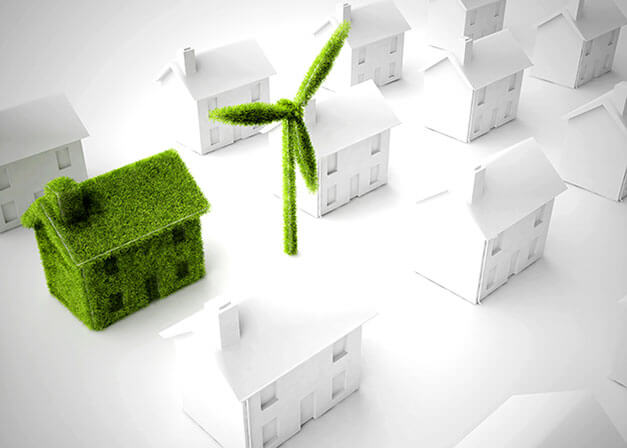
The rise of sustainability as both a trend and a need has seen many industries rethink their common practices – and the construction industry is no different. Changes might involve rethinking the way the industry’s processes work, and will often represent a chance to streamline inefficient methods and revolutionise best practice protocols. We’re going to take a look at the main sustainable building trends that are slowly becoming integrated into the world of construction. By understanding these, we can get a better sense of what’s immediately ahead and how we can prepare for these changes.
Implementation of eco-friendly building materials
From natural fibre insulation to the use of paints, glues and carpets that are free from volatile organic compounds, eco-friendly building materials are becoming increasingly popular on construction sites. One great example of this is green roofs, which involve growing plants on the roof of a building to provide insulation, harvest water and also provide a place where residents can enjoy urban gardening in the comfort of their own homes. As cityscapes continue to grow and expand, we can expect the implementation of eco-friendly building materials to continue to be picked up at a similar rate to what we’ve recently seen.
New methods to control the use of water
While certain parts of the world are well aware of how scarce a resource water can be, others are starting to realise the value of implementing water-saving methods into their design processes. From sometime as simple as a low-flow toilet and the installation of water-saving fixtures, to something as complicated as a rainwater harvesting process, these methods are becoming increasingly popular in contemporary building designs. Greywater recycling is also on the rise – this is a process whereby treated water can be used in commercial cooling towers, irrigation and toilet flushing. It is being picked up by contemporary architects and designers and used in many of their modern designs.
Houses with designs to minimise energy usages
Engineers and architects have an expert idea of how very simple design choices can make a huge difference in the energy usage of a home. Choices that can be as simple as strategic window placement can really revolutionise how much artificial heating and lighting you require to make your lodgings comfortable. More complicated processes such as designing a house in a manner that provides maximum airflow and superior insulation techniques, can all make a big difference in terms of minimising energy usage.
Increasing installation of devices that employ renewable energy
‘Going green’ is becoming a much bigger focus of architects, designers and planners and the installation of devices that employ renewable energy is becoming increasingly popular. Part of this has to do with the fact that it’s becoming much easier to source these devices. Solar panels, for instance, are now relatively cost-competitive with traditional, less-green sources of energy in the residential market. The implementation of geothermal energy processes in heating and cooling systems is also becoming popular in modern designs and should continue to do so into the future.
Designs, buildings and communities that are occupant friendly
Rethinking the manner in which a city’s people will go through their day-to-day lives has also been a focus of architects, town planners and urban developers. Designing communities that are primarily walkable and built close to mass transit systems are increasingly popular as urban planners look to ways they can use the natural landscape to reduce energy and utility costs. At a more technical level urban planners are also looking at innovative ways they can use the natural landscape to reduce the energy and utility needs and costs of local residents and maximise overall energy efficiency.
An interesting note on sustainable building trends in Australia
While most of the world seems to be taking up these sustainable building trends with enthusiasm, Australia seems to be somewhat bucking the trend. The study, World Green Building Trends 2016: Developing Markets Accelerate Global Green Growth, found that many developed countries including the US, UK, Germany and Poland expected to be doing as many as 60 per cent of projects which could be considered to be completed to green construction standards.
Not so in Australia. The report found the growth rate in Australia was well below the average of 24 per cent, stating, “Given the maturity of the green building market in Australia, this finding is surprising. It is possible, since green in this study only applies to certified projects, that as a mature green market, green building practices are more widely adopted in Australia, reducing the need for certification.”
As the implementation of these sustainable building trends becomes more and more important, planners and policy makers will need to consider ways to influence increased uptake in Australia.



